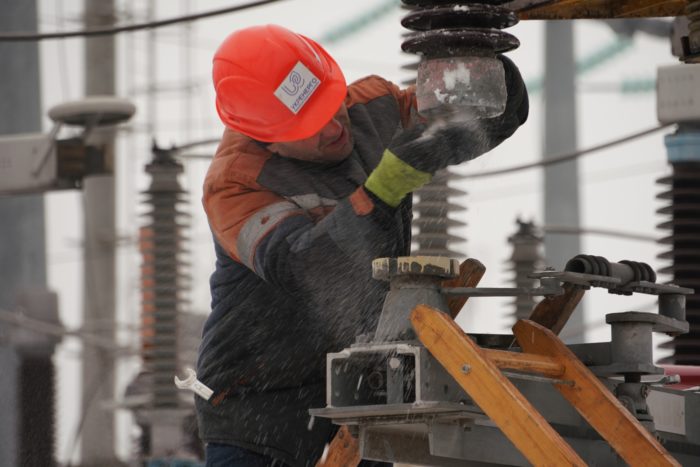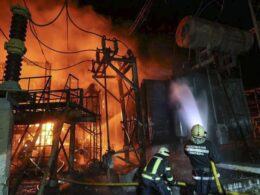Ukraine is preparing for new attacks on its energy system by manufacturing or procuring 100 new high-voltage transformers to replace those destroyed in Russian strikes, The Economist reported.
According to the report, some 100 new high-voltage transformers have been ordered, half to be made in Ukraine and half sourced from abroad. But strikes on Ukrainian factories mean few of the domestic transformers have been built. The foreign transformers will be stored in Poland and Romania until needed.
The Economist writes that Ukrainian engineers have done excellent work, developing unique power distribution schematics and equipment across the country.
Ukraine also has many old but recently retired transformers that can be reconnected if required after upgrades.
Energy Minister Herman Haluschenko says Ukraine now has great experience handling large-scale attacks. But he expects the Russians have also learned lessons from their failure to destroy the system. The country needs more air defenses, he says.
The Economist visited a power plant struck last year where a Russian missile heading straight for the engine room was deflected seconds before impact by one of the station’s many transmission lines, saving the system’s heart. The plant has endured eight missile strikes since the invasion began.
Now, sand-filled bastions surround key elements across the facility to protect against shrapnel. But a direct hit would still be disastrous, says the director. It’s impossible to encase the high-voltage transformers in concrete as they would overheat.
There is another issue as well. DTEK, which produced a quarter of Ukraine’s electricity before the war, says 5,000 of its 60,000 pre-war employees are now in the army. Already 250 women work underground in the company’s coal mines, whereas none did so before the war.
Per The Economist, from 10 October through the end of 2022, the average Ukrainian home lost power for five weeks.
The damage inflicted by Russia’s aggression aimed at freezing Ukrainians last winter was enormous. A UN Development Program report found Ukraine’s energy generation capacity in April 2023 was down 51% versus pre-invasion February 2022.
During the full-scale invasion of Ukraine, Russian forces launched over 1,200 missiles and kamikaze drones to degrade Ukraine’s critical civilian infrastructure, particularly the energy system, Ukraine’s state-owned electricity transmission system operator Ukrenergo reported on 8 April 2023.
Around 250 Russian missiles and drones hit their targets, and 43% of the main power grids were damaged, according to Ukrenergo. All thermal and hydroelectric power plants in Ukraine were shelled and damaged.
British and Ukrainian intelligence agencies have warned that Russia will likely resume attacks on Ukraine’s energy infrastructure with the onset of cold weather.
Nuclear power comprises the largest share of Ukraine’s energy production. While the three operational nuclear plants still under Ukrainian control have not been directly attacked, Russia’s seizure of the Zaporizhzhia nuclear power plant cut nuclear capacity 44%.
On 24 September, The United States and Ukraine signed a Memorandum of Understanding (MoU) concerning cooperation to bolster the resilience of Ukraine’s energy system, including a fund of $522 million, $100 million of which is contingent upon meeting certain conditions.
Read also:
- Over 40 European energy firms turn to Ukrainian facilities to store gas for winter
- Ukrenergo prepares for “any possible scenario” as Russian missile attack damages energy facilities
- Russia resumes air attacks on Ukraine’s energy infrastructure: partial blackout in Rivne Oblast
- Ukraine on high alert as Russian strikes on energy system loom
- Polish PM slams Merkel for energy agreements with Russia, draws comparison to Molotov-Ribbentrop Pact







